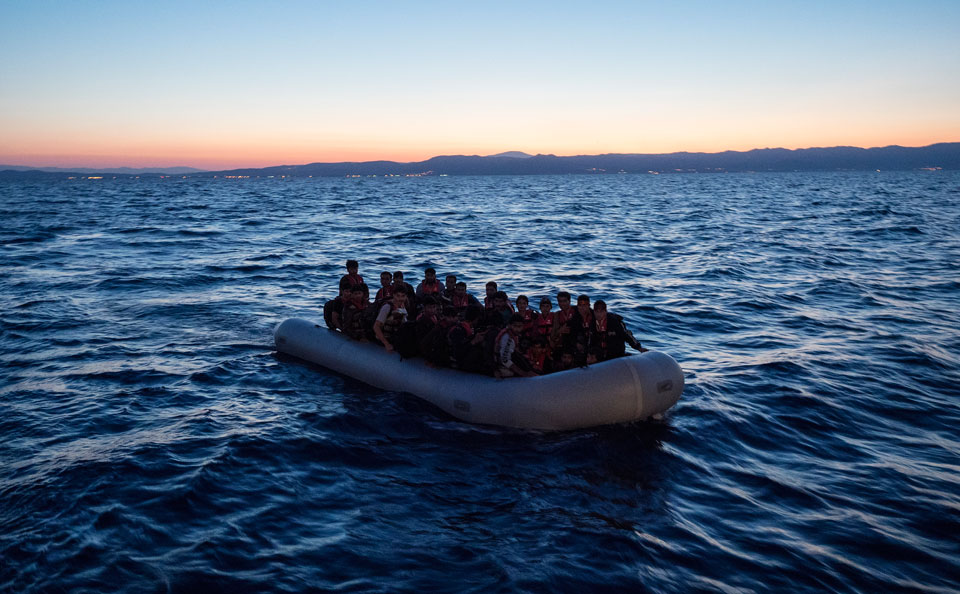At the mercy of traffickers
Kathimerini goes in search of the smuggling networks based in Turkey that send boatloads of people toward the shores of Greece

SPECIAL REPORTS 11.07.2015 • REPORTING: YIANNIS PAPADOPOULOS • PHOTOGRAPHY: ENRI CANAJ • VIDEO EDITING: PANOS VOUTSARAS
At the refugee camp of Kara Tepe, 4 kilometers from the town of Mytilene on the eastern Aegean island of Lesvos, lunchtime is the hardest part of the day. The honking of the white van that brings in 1,200 lunches a day gets the hundreds of migrants and refugees staying at the former educational park out of their tents. They swarm the vehicle, grab onto its roof, push and shove, at risk of being trampled. The driver, Stavros Agas, tries to calm them.
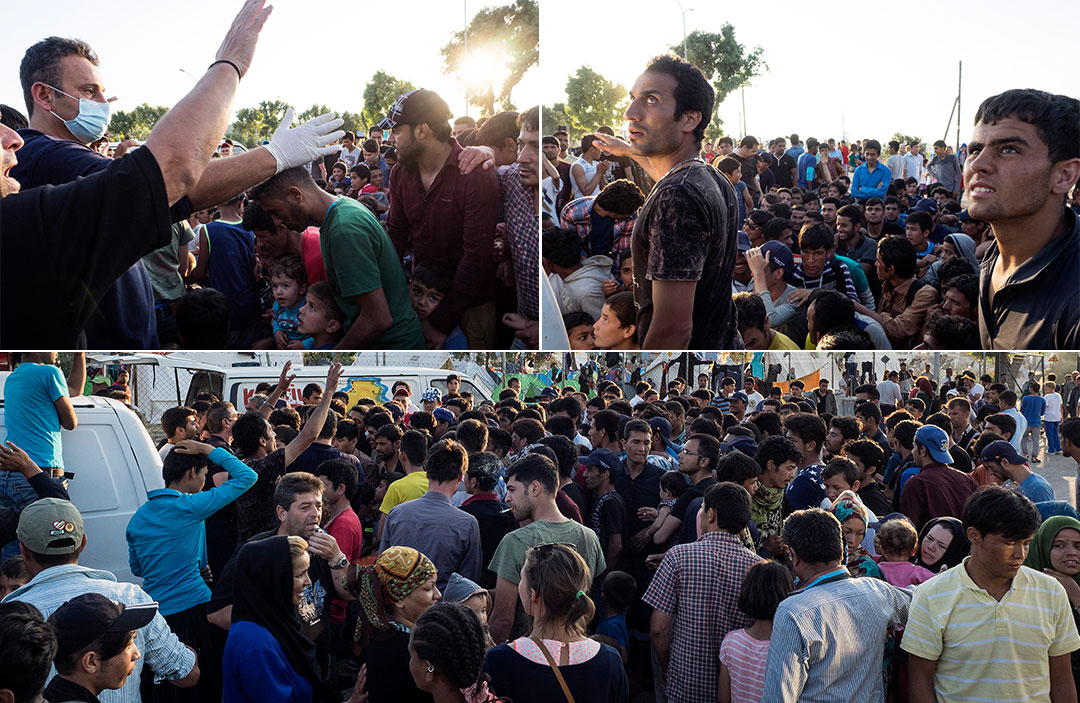
“They need you to smile. They’re humans, not animals,” he says. There is nothing for these people beyond this space and absolutely no help for the three coast guard officers trying to impose some semblance of order without any interpreters.
Since the start of 2015, the Greek islands of the eastern Aegean are estimated to have received more than 48,000 people from Syria, Afghanistan, Pakistan and Iraq, surpassing the record from 2014 in just six months. Lesvos is on the front line of this wave of arrivals.
“The problem starts in Turkey,” says Mytilene Mayor Spyros Galinos. “Some of the traffickers there are making billions by taking advantage of human suffering.”
In the neighborhood of Basmane, long caravans of migrants start forming early in the morning. Laden with their belongings, they form groups of 20-40 people and wait around in parks and public squares. Most are Syrian and they know the names of the places they are heading to in Greece.
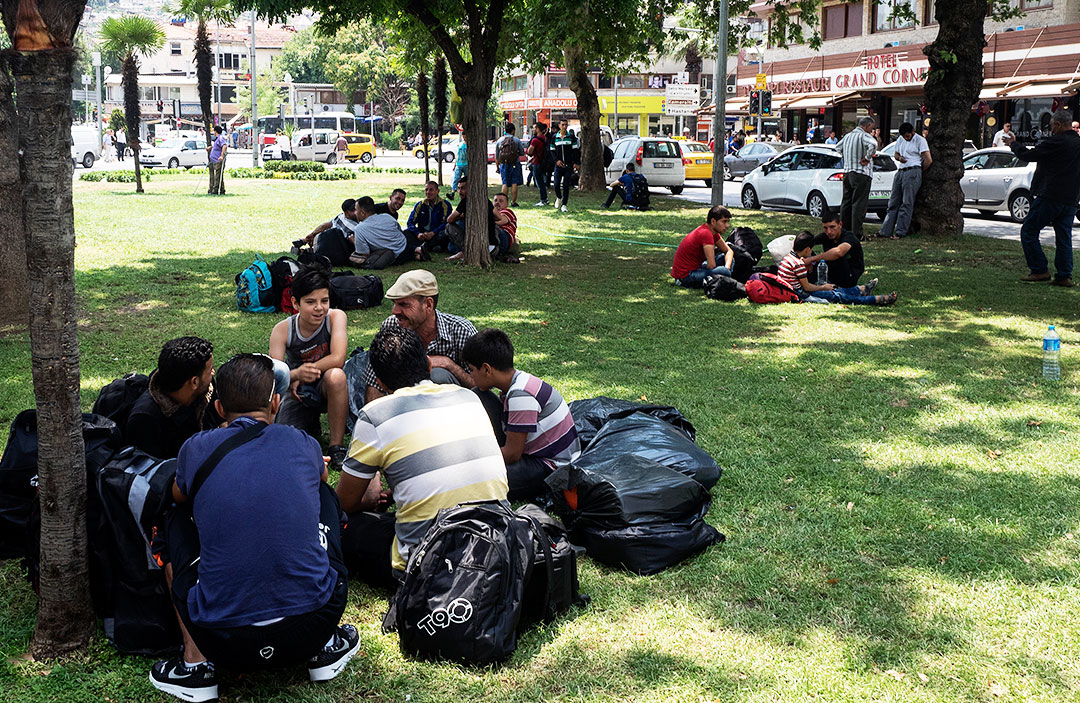
One of the men we speak to says he wants to go to Athens and then up to the Greek border with the Former Yugoslav Republic of Macedonia (FYROM), from which he hopes to get deeper into the European Union on foot. He quit smoking three months ago, when he first arrived in Izmir, so he could make the long trek. Like most of the other migrants there, he’s been waiting for orders from the traffickers or their mediators.
Some carry black plastic bags containing life vests to be worn on the crossing to Greece, purchased for 35 Turkish lira (11.60 euros). Basmane, a once-popular resort town, has become the main launch pad for the crossing to the Greek islands of Lesvos and Chios. The trafficking is so blatant that a barber in the area sells life vests and inner tubes (the cheaper alternative).

At the other end of Izmir harbor, Alsancak is dedicated to tourism, with bustling hotels and shops. A Syrian trafficker who lives there agreed to speak with Kathimerini on the condition of anonymity. He’s 25, has a funky haircut and an iPhone 6 Plus, and wears powerful prescription glasses that magnify his eyes. He says he was imprisoned by the Assad regime in Syria, escaped, and arrived in Izmir with $100 in his pocket. He claims that he initially slept rough as he looked for work.

“I did all sorts of odd jobs, from painting to working at a furniture factory, but the Turks wouldn’t pay me,” he says. He eventually decided to get into the migrant-smuggling racket as a mediator between the Turkish boss and the migrants. Today he is in the middle of the smuggling chain. He doesn’t talk to potential clients directly, which is why he declined to meet us in Basmane. He does his business by phone and has an associate who handles the details on the ground with the migrants.
“The market is controlled by Turks and prices are going up, which is why there are so many people in Izmir’s public squares,” he says.
The 25-year-old is new at the job, yet in less than a year he has sent some 500 migrants to Chios, earning commissions totaling more than $50,000. The lion’s share of the fee paid by migrants goes to the boss while another, smaller part goes toward the purchase of the boat and the engine that will take the migrants across.
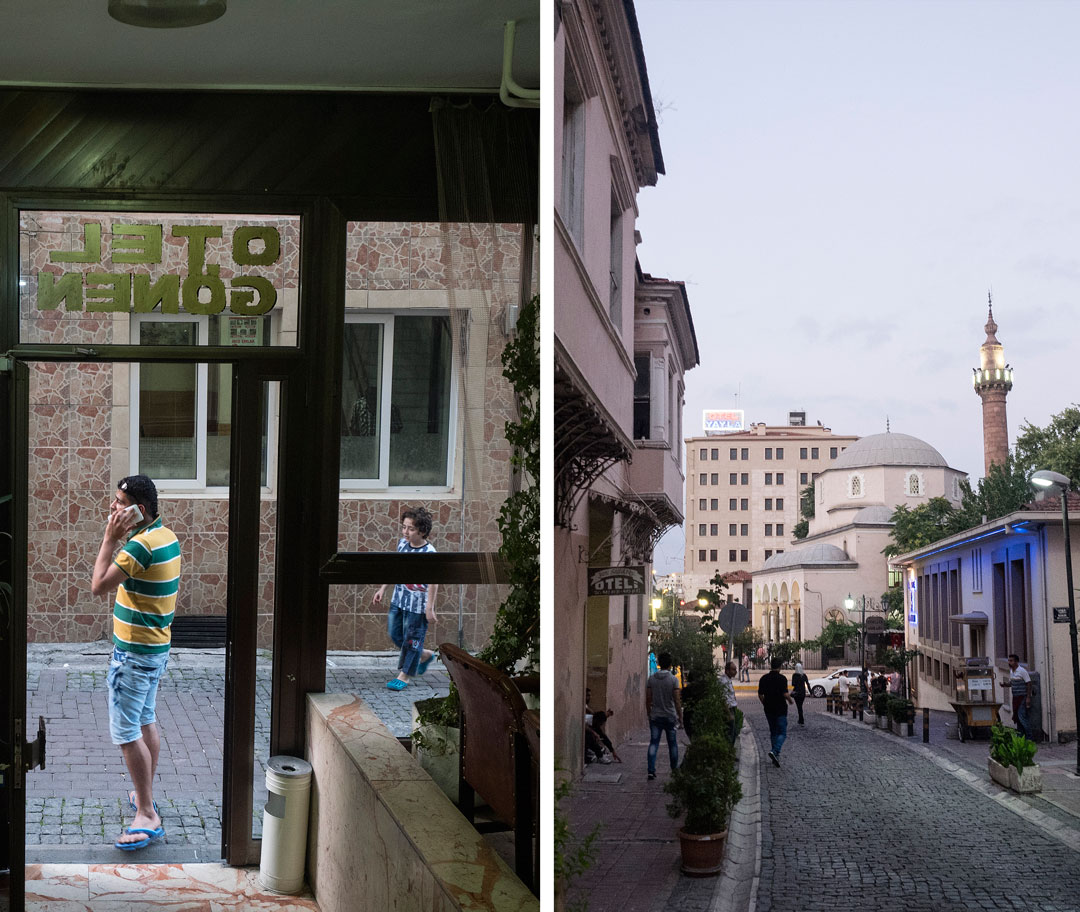
“They reach me by phone, through word of mouth,” says the 25-year-old. “The service we offer is the most expensive in the market. We provide a 9-meter Italian boat with a Japanese engine and the best life vests. We get 40 people on board and the island is a 20-minute ride away. For $1,000 we’ll get you there.”
This was the same fee that 32-year-old Syrian refugee Mouna Ibrahim was told she’d have to pay. She’s been in Izmir for the past six months with her husband and their children, aged 5, 6 and 7. They share a two-bed room in a cheap hotel in Basmane, paying 15 lira (5 euros) a night per person.
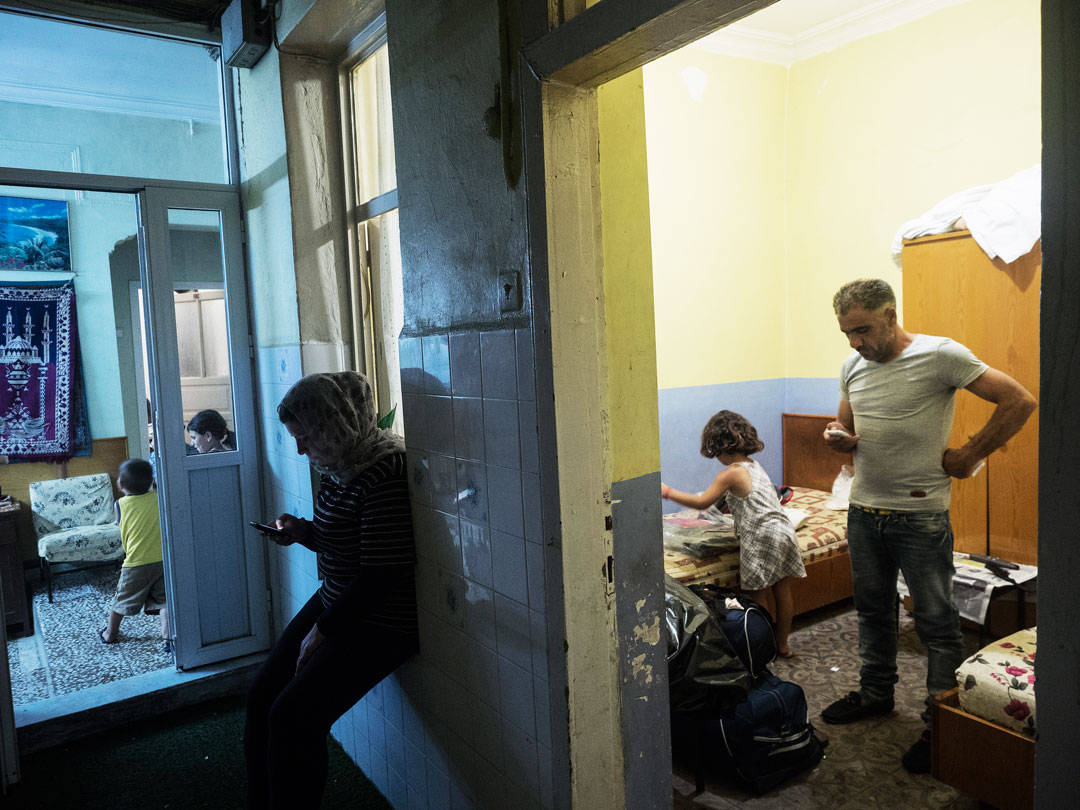
The entire hotel is full of migrants and refugees. Like most in the area, it only offers shared bathrooms and is filthy, with the owners trying to cram in as many bodies as possible, even on the roof. Some hotels have been charging as much as 20 lira per person since demand spiked.
Ibrahim has never lived in Greece yet she speaks the language, with a Cretan accent.
“I’m afraid for my boys, of the sea,” she says using the typical Cretan word for boys, “kopelia.”
Her great-grandmother was born on Crete and left the island in the late 19th century together with other Muslims who settled in Syria.
Preparing for the trip
“We took just a small bundle of clothes,” says Ibrahim, showing how they wrap their money in rolls and seal it with tape so it doesn’t get wet at sea.

Their days in Izmir are monotonous, spent in the sweltering hotel room or sitting in the lobby. They are waiting, just like all the other refugees in the area, to be contacted by the smuggler so they can finally get in the van that will take them on a nighttime ride to Dikili or Cesme, where they will board a boat to Greece.
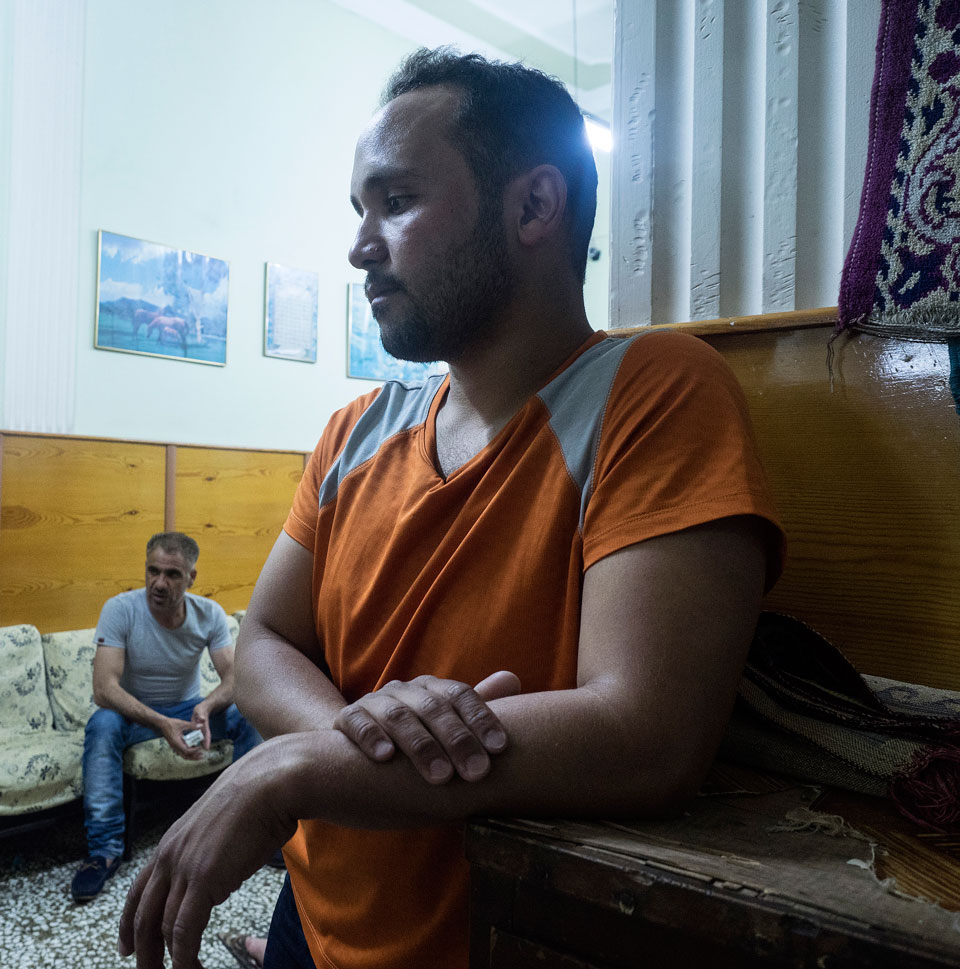
“It’s my favorite country,” says Stefanos.
Ibrahim’s cousin will also be traveling with them. He’s 32 and introduces himself as Stefanos, the Greek name by which he was known when he lived on Crete from 2005 to 2011. He moved back to Syria just before the war broke out there. While most refugees want to make it to Western Europe, Stefanos would like to return to Crete.
“It’s my favorite country,” he says in perfect Greek. “I don’t want to die but there’s no other way to get there.”
Stefanos tracked down the trafficker in Izmir with an introduction from other relatives who had already made the journey. It was also from Izmir that he had made his first crossing to Greece in 2005, paying $3,500 at the time.
The night we met him was the night he was supposed to leave. He was frightened. “They say there’ll be just 15 to 35 people on the boat, with children and women. But there may be as many as 45 or 50 when we get there. They don’t care if we live or die. They just want their money,” he says of the smugglers.
He keeps looking at his cell phone. Around midnight he gets a message from the trafficker saying that the trip has been canceled because another boat has sunk and several migrants have drowned. Back in his cousin’s room the children play with their bright orange and red life vests. None of them can swim.
One night, we go on a patrol with the Mytilene coast guard. They get their first call before the four-man crew has a chance to untie the boat, warning of a vessel with 39 people on board that has been seen taking on water off the coast of the island, near the airport.
“Please stop engine. We help you,” the captain says over a megaphone as we reach the site.

A baby sobs as its father tosses it into the open arms of a coast guard. Another migrant vomits as soon as he’s pulled on board the coast guard vessel. All of the passengers are wearing life vests or inner tubes. They are all rescued within 10 minutes. During the same shift, the rescue team responds to two more calls, bringing in 126 people, among them a pregnant woman and a blind man.

“There is so much pressure. Our job and our duty is to save every single person,” says junior lieutenant Michail Kapitanellis, who has been on patrol for 15 years. “We are physically and mentally exhausted but we just grit our teeth and carry on,” he says.
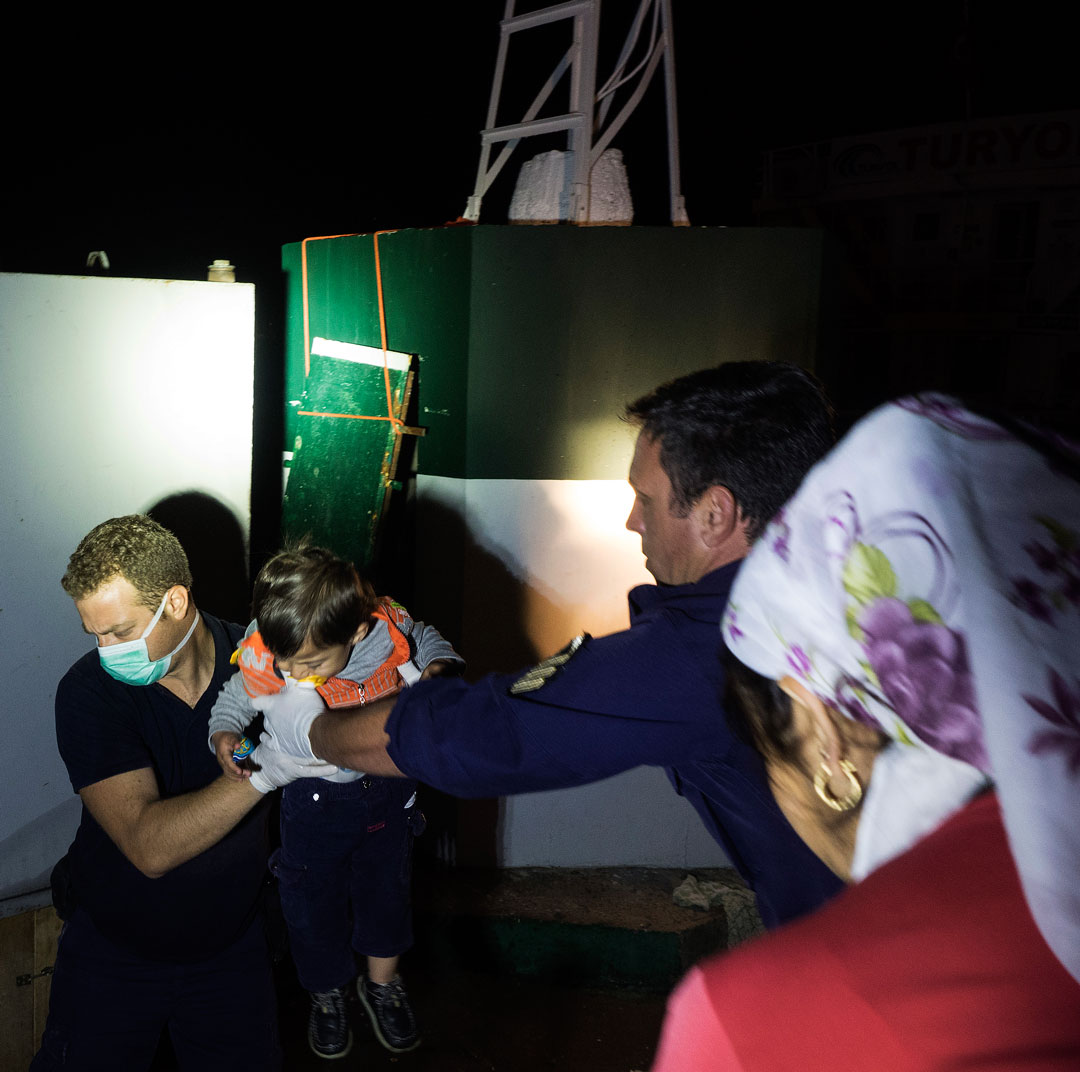
Calls for reinforcements
Once the migrants are rescued the tribulations continue on land. Until each individual is identified by the police, the migrants are under the supervision of the coast guard. At the Kara Tepe camp, some of the migrants who speak Greek try to help the officers. They form a human chain, passing the plastic containers of lentils and loaves of bread down the line. The officers spot a man in the line wielding a hammer. They remove him hurriedly and return him to his quarters. “He’ll eat last,” they say.
Once the food handout is completed, the officers go to check on the supplies kept in a stifling, muddy cargo container: five sleeping bags, one packet of toilet paper, 10 cartons of fruit juice. Demands for baby formula, clothing and medicine are constant.
“We’ve been dumped here,” says one officer. “We’re not nurses or doctors. We got 20 pairs of shoes today that were donated. With 1,000 people at the camp, how are we to decide who gets them?”

Mytilene Harbor Master Nikolaos Varthis is expecting 20 more men to join his team in the next few days. Most of his work has to do with controlling the flow of migrants and he can see the signs of exhaustion in his staff. “Sometimes we’ll give them a day off but it’s not always possible,” he says.
Islands struggle with huge influx

“I heard a lot of lovely words and promises, but have received little help,” says Mytilene Mayor Spyros Galinos.
Since September, when he was elected mayor of Mytilene, Galinos has made repeated pleas for help to the previous and current government.
“Repeated invitations brought [Alternate Minister for Citizens’ Protection Yiannis] Panousis and [Alternate Minister for Immigration Tasia] Christodoulopoulou to the island. I heard a lot of lovely words and promises, but have received little help,” says Galinos.
In an effort to take some of the pressure off the port where migrants were initially held, local authorities created the Kara Tepe camp. But the 400 migrants it was originally designed for swelled to over 1,500 in June. The second facility is the Identification Center in Moria, which is run by the police. The cargo containers that make up the migrants’ shelter are enough to accommodate 700 people. There are also two reception centers, accommodating 240 people, that are waiting to open but have not because of a lack of staff. A third camp has grown outside Moria, accommodating 700 migrants. They lie in tents under the hot sun all day or try to seek out shade wherever they can, including in a riot van with mechanical problems.
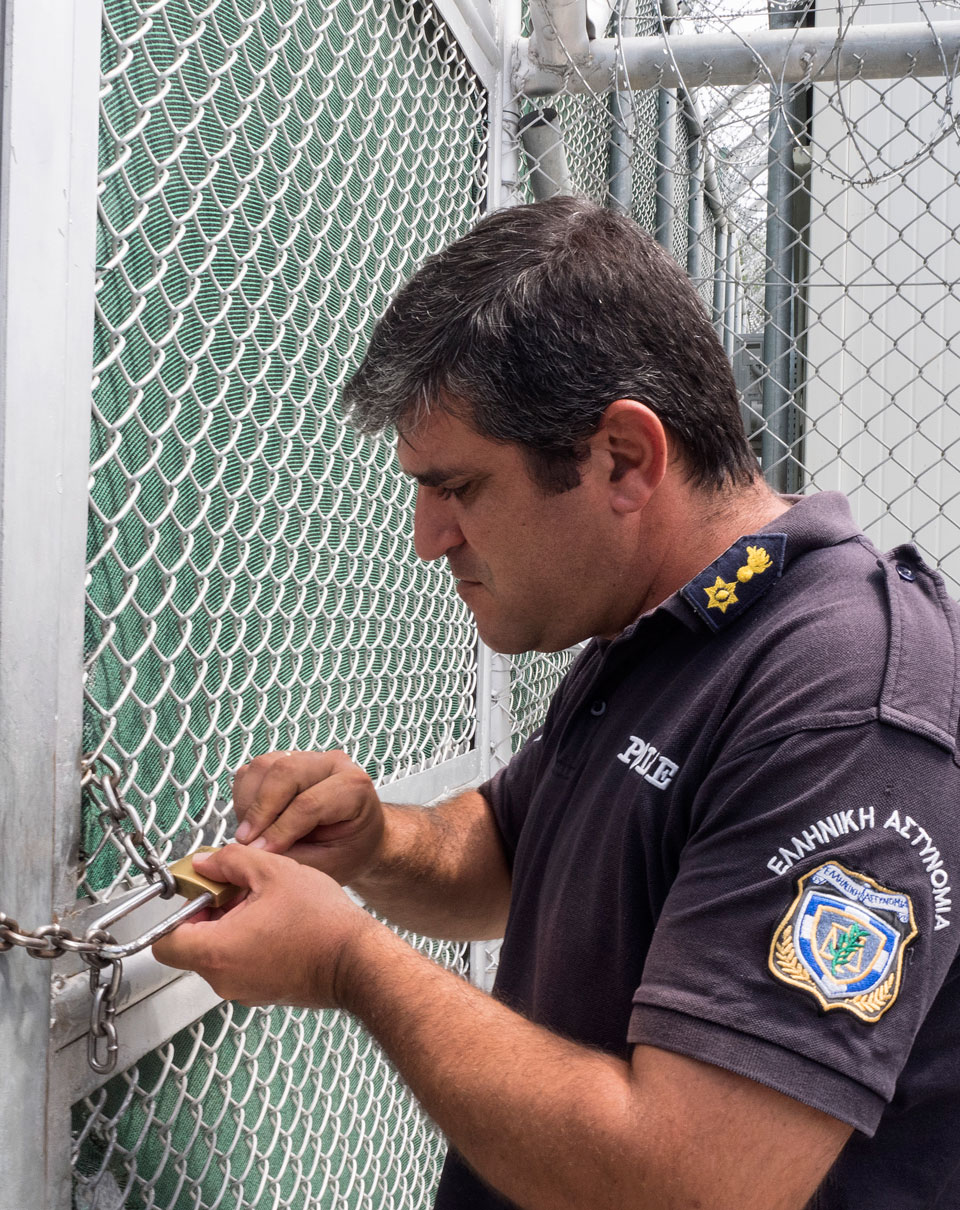
“I'm expected to coordinate between the police and the coast guard, but with the volume of arrivals it's very difficult,” says policeman Costas Papazoglou.
“We haven’t managed to get organized. It’s hard to find the migrants when their turn comes for registration. I can spend hours looking around the camp for someone only to have them turn up two days later,” says Costas Papazoglou, a police officer who is charge of migrant affairs in Mytilene.
In the Moria center, four police officers and a staffer from Frontex, the European Union’s border agency, are responsible for registering, fingerprinting and photographing the migrants and asylum seekers, passing their details on to a database in Luxembourg through the Eurodac system. They only have four computers to work with. The process can take as long as three days in some cases yet sometimes they manage to get through as many as 550 people a day.
“We need Eurodac stations, transfer vehicles, drivers and personnel so we can work more efficiently,” says Papazoglou.
The volunteers and tourists
Identifying the migrants is the most pressing task. The migrants themselves want to be released so they can get on with their journey while the locals want to see the facilities emptying.
Where the state falls short in the processing, volunteers step in, such as music teacher Evripidis Kalogridis, who is part of a community network and recently handed out sleeping bags.
“We try to help these people also for the local community so that racism doesn’t become an issue,” he says.
A lot of tourists also jump in to help.
“They ask the migrants if they’re hungry and give them something,” says Dimitris Tekes, a Molyvos hotel owner. “None of my guests who have been coming back for years suggested they wouldn’t do so again.”
Behind a taverna just a few meters from his quayside hotel, a group of 40 people lie on the ground, waiting to be transported to a camp by the coast guard. They are approached by tourists who offer them cigarettes. Sometimes a boat will land at the beach in the morning when tourists are having their breakfast and they will offer the passengers food.

Galinos’s biggest concern is that unless serious measures are taken by the government, the situation on the island may become unmanageable as the tourism season peaks in August.
He wants to set up small reception centers at the more popular landing areas and then a transportation network to get the migrants to the camps in an orderly manner. He says that some migrants have to walk as many as 60 kilometers to get to the north of the island where the camps are located.
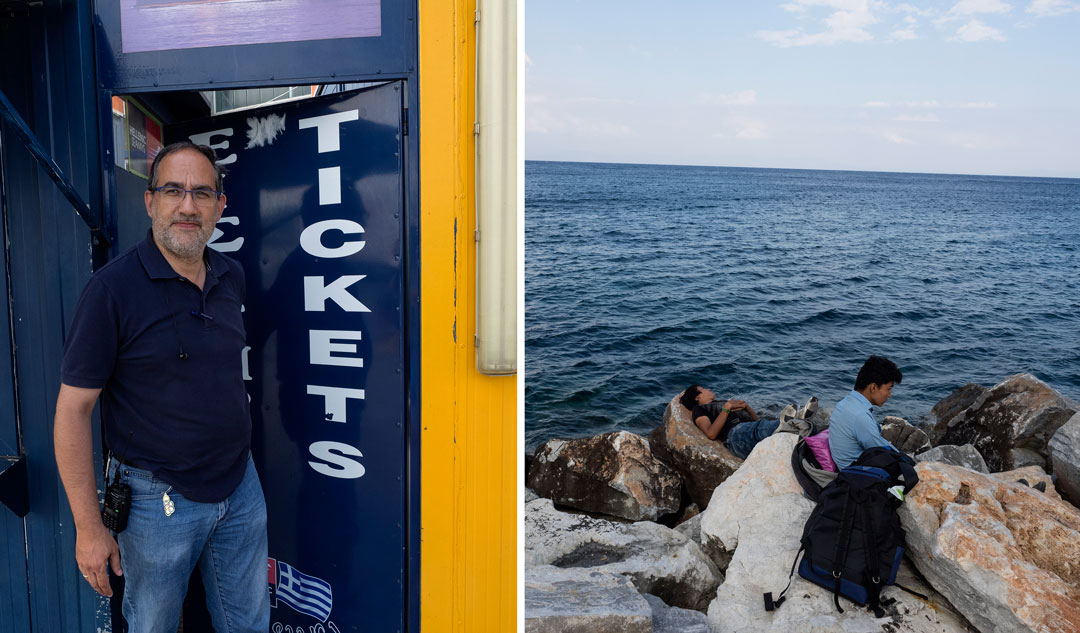
“The situation is beyond us. We need staff, we need infrastructure,” says Giorgos Sykoutris, a coordinator for the Mytilene branch of the non-governmental organization Metadrasi, which offers interpretation services at the Moria camp and chaperoning for unaccompanied minors.
“They should open up unused military bases so we have more long-term stay facilities,” argues Sykoutris.
Galinos believes that a lot of precious time has already been wasted.
“When you try to do something after the fact, you are already too late,” he says. “We are in danger of seeing a change in the stance of the local community, of it no longer acting with kindness.”
A launch pad to Europe
Izmir rackets target Greek islands
Reporting: YIANNIS PAPADOPOULOS
Photography: ENRI CANAJ
Video Editing: PANOS VOUTSAS
Page design: VALENTINA VILLEGAS NIKAS
For Kathimerini and Kathimerini.gr.
Saturday 11.07.2015

